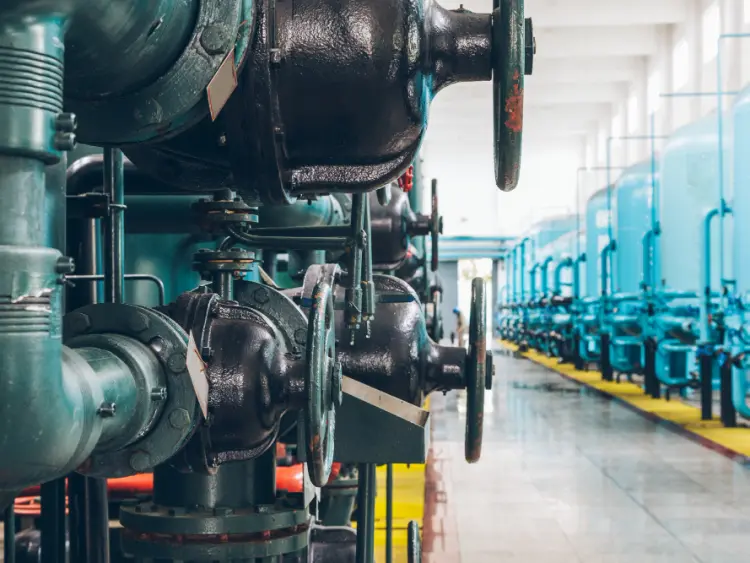What Is The Difference Between Eccentric Plug Valve And Butterfly Valve?

Industrial flow control applications often require choosing between eccentric plug and butterfly style control valves. While both throttle fluids, distinct design differences impact performance and suitability for various services.
Eccentric plug valves utilize an eccentrically pivoting cylinder to align ports for throttling flow. Adjusting plug position modulates flow with accuracy across an exceptionally wide control range. Butterfly valves rely on a rotating vane that pivots within the flow path to regulate passage area. Their high capacity conduits suit on/off applications rather than precision throttling duties.
In essence, depend on eccentric plug valves for precision flow modulation. For higher volumes, utilize a butterfly valve for efficient on/off control.
Comparing Functional Differences
Beyond distinct flow control methods, eccentric plug and butterfly valves differ in other functional respects.
Definition
Eccentric plug valves utilize an eccentrically pivoting cylinder to align ports for throttling flow. Adjusting plug position modulates flow with accuracy across an exceptionally wide control range.
Butterfly valves rely on a rotating vane that pivots within the flow path to regulate passage area. Their high capacity conduits suit on/off applications rather than precision throttling duties.
Using
Eccentric plug valves serve well across steam, water, oil and chemical services for precision throttling or frequent operation. The eccentric mechanism enables reliable tight shutoff despite wear.
Butterfly valves handle higher capacity gas, water or corrosive chemical duties efficiently, especially for basic on/off needs at larger pipeline sizes. Their faceted discs permit some flow adjustment along with tight shutoff.
Consider Service Conditions
When selecting either eccentric plug or butterfly valves, application specifics guide the decision.
For example, plug valves serve well across steam, water, oil and chemical services for precision throttling or frequent operation. The eccentric mechanism enables reliable tight shutoff despite wear.
Butterfly valves[1] handle higher capacity gas, water or corrosive chemical duties efficiently, especially for basic on/off needs at larger pipeline sizes. Their faceted discs permit some flow adjustment along with tight shutoff.
Choosing either valve depends chiefly on the precision and flow rate needed. Eccentric plug valves bring accuracy, while butterfly valves offer higher capacities.
PANS – Eccentric Plug Valve Manufacturers
Since 1985, PANS has provided specialized valve solutions for industrial customers. As experts focused solely on plug valves, we help optimize designs for peak performance, safety and profitability.
Whether implementing high performance eccentric plug or other valve technologies, our application-based guidance ensures a solution tailored to your operational needs – not a one-size-fits-all product.
Conclusion
Efficient flow control requires selecting the best valves for specific process conditions and objectives. Both eccentric plug and butterfly valve styles have distinct capabilities spanning control precision, flow rates, tightness, and other variables.
Contact PANS to discuss implementing the optimal valves for your flow control challenges. Discover how our specialty valves improve process functionality across industries ranging from energy to chemical processing, gas transmission, and beyond.
Search
Categories
Tags
Product
- Ball Valve
- Floating Ball Valve
- Fully Welded Ball Valve
- Trunnion Ball Valve
- Check Valve
- Cast Lift Check Valve
- Cast Swing Check Valve
- Wafer Type Check Valve
- DIN Valve
- DIN Bellow Sealed Globe Valve
- DIN Globe Valve
- DIN Rising Stem Gate Valve
- DIN Swing Check Valve
- Forge Valve
- Forged Check Valve
- Forged Floating Ball Valve
- Forged Gate Valve
- Forged Globe Valve
- Gate Valve
- Bellow Sealed Gate Valve
- Flat Gate Valve
- Wedge Gate Valve
- Globe Valve
- Cast Globe Valve
- Plug Valve
- Eccentricity Plug Valve
- Inverted Pressure Balance Lubricated Plug Valve
- Orbit Plug Valve
- Sleeve Type Plug Valve
- Slurry Valve
- Slurry Valve
- Strainer


